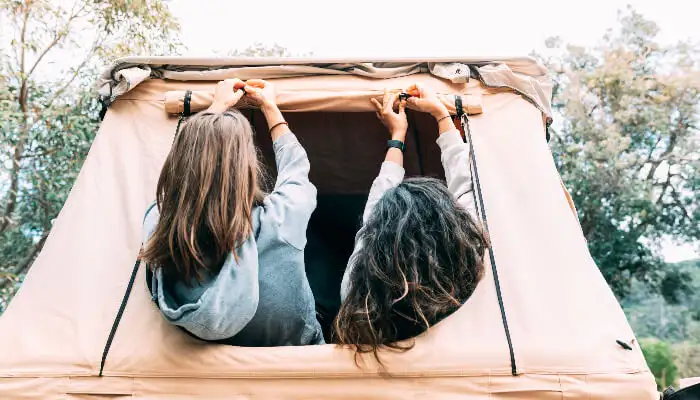Camping is an outdoor activity that allows you to immerse yourself in nature and create lasting memories.
However, the experience can vary greatly depending on the season you choose to embark on your adventure. Each season presents its own set of challenges and opportunities, and being prepared for what to expect can make all the difference in ensuring a safe and enjoyable time.
In this article, we’ll explore the unique aspects of camping in different seasons and provide tips on how to prepare for a successful outdoor excursion.
Spring Camping
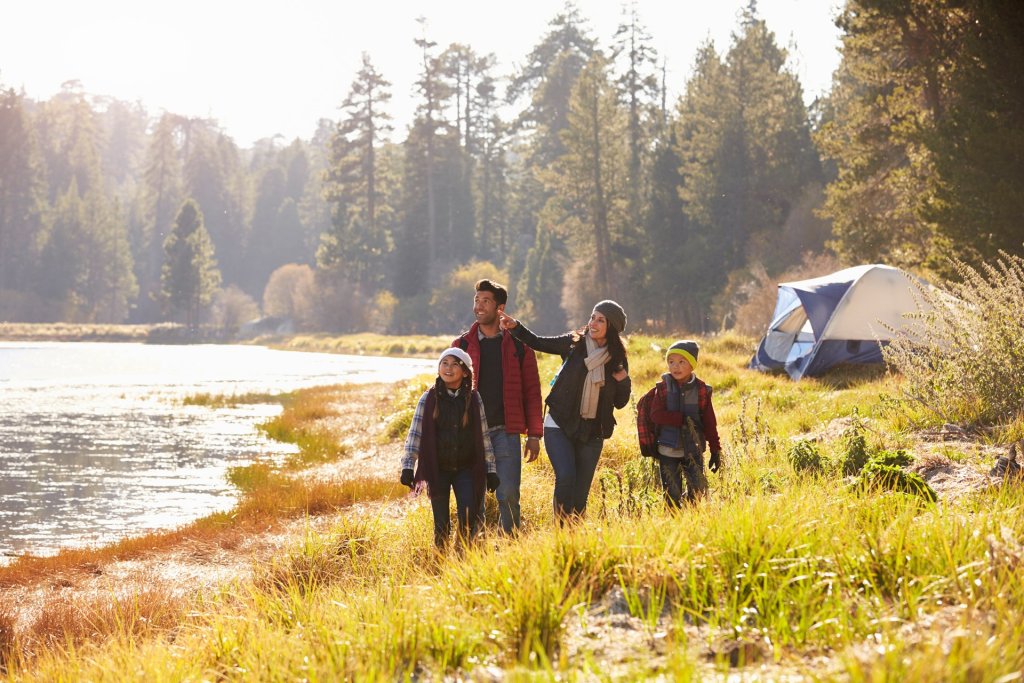
Spring is a time of rejuvenation and rebirth in the great outdoors. As the snow melts and the temperatures begin to rise, nature awakens from its winter slumber, offering a vibrant and colorful canvas for your camping adventures.
However, spring camping also comes with its fair share of challenges. The weather can be unpredictable, with sunny days quickly giving way to rain showers or even late-season snowstorms.
Melting snow and frequent rain can turn trails and campsites into muddy messes, making it challenging to stay clean and dry.
On the bright side, spring is a prime time for witnessing nature’s beauty. Wildflowers carpet the landscape, and trees begin to show their vibrant green hues. Many animals emerge from hibernation or migration, making it more likely to spot them as they forage for food and seek mates.
To prepare for spring camping, pack waterproof and breathable rain gear to stay dry during unexpected showers, and bring extra socks and footwear to combat muddy conditions. Be prepared for cooler temperatures, especially at night, with appropriate layering and insulated sleeping bags.
Don’t forget to pack bug spray and treat your clothing with permethrin to ward off mosquitoes and other pesky insects. Research trail conditions and campground openings, as some facilities may still be closed or partially operational due to the changing seasons.
Spring Camping Tips
- Pack waterproof gear and extra socks for muddy trails and rain
- Layer up for cool nights and bring an insulated sleeping bag
- Treat clothing with permethrin and pack bug spray for insects
- Research trail and campground conditions as some may still be closed
Summer Camping
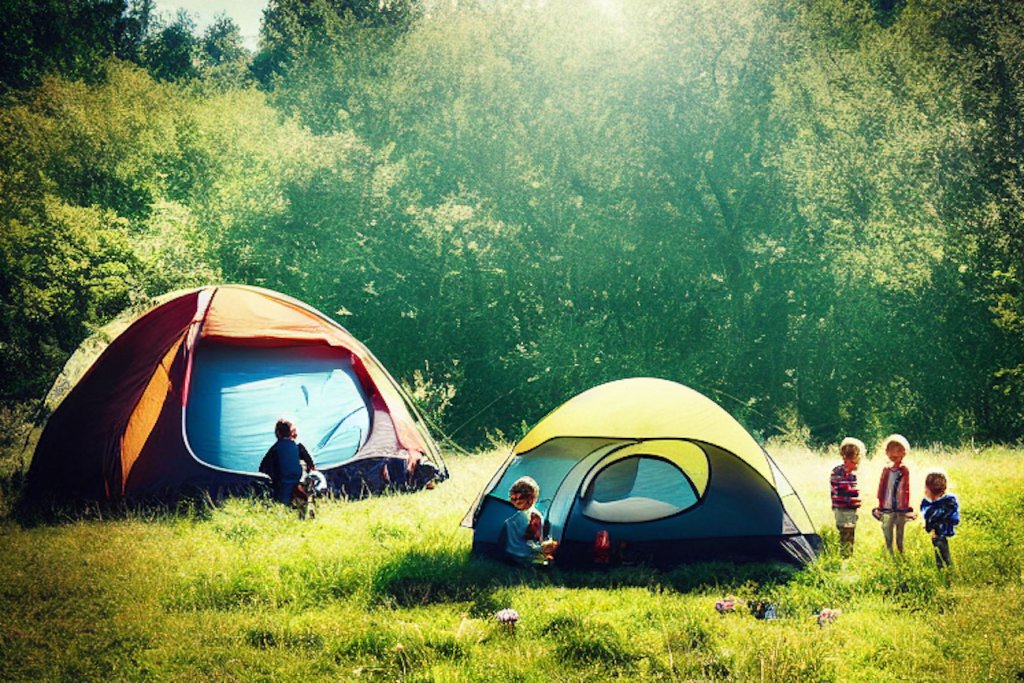
Summer is the peak season for camping, offering warm temperatures, long days, and plenty of opportunities for outdoor adventures.
However, with school out and vacation season in full swing, popular camping destinations can become quite crowded. The hot and humid weather can also be a challenge, making it essential to stay hydrated and seek shade when possible.
Mosquitoes, flies, and other insects thrive in the warm summer months, so be prepared to deal with their presence. Additionally, summer is known for its intense storms, which can pop up quickly and disrupt your camping plans.
To prepare for summer camping, book your campsites and secure permits well in advance to ensure availability during the busy season. Pack lightweight, breathable clothing and sun protection (hats, sunglasses, and sunscreen) to combat the heat.
Invest in a quality tent and camping gear designed for hot weather, with proper ventilation and moisture-wicking properties. Bring insect repellent, mosquito nets, and other protective measures against pesky critters. Stay informed about weather forecasts and have a plan in case severe storms or other emergencies arise.
Summer Camping Tips
- Book campsites well in advance to secure a spot during peak season
- Pack lightweight, breathable clothing and proper sun protection
- Bring insect repellent and mosquito nets to combat pesky critters
- Stay informed about potential thunderstorms and severe weather
Fall Camping
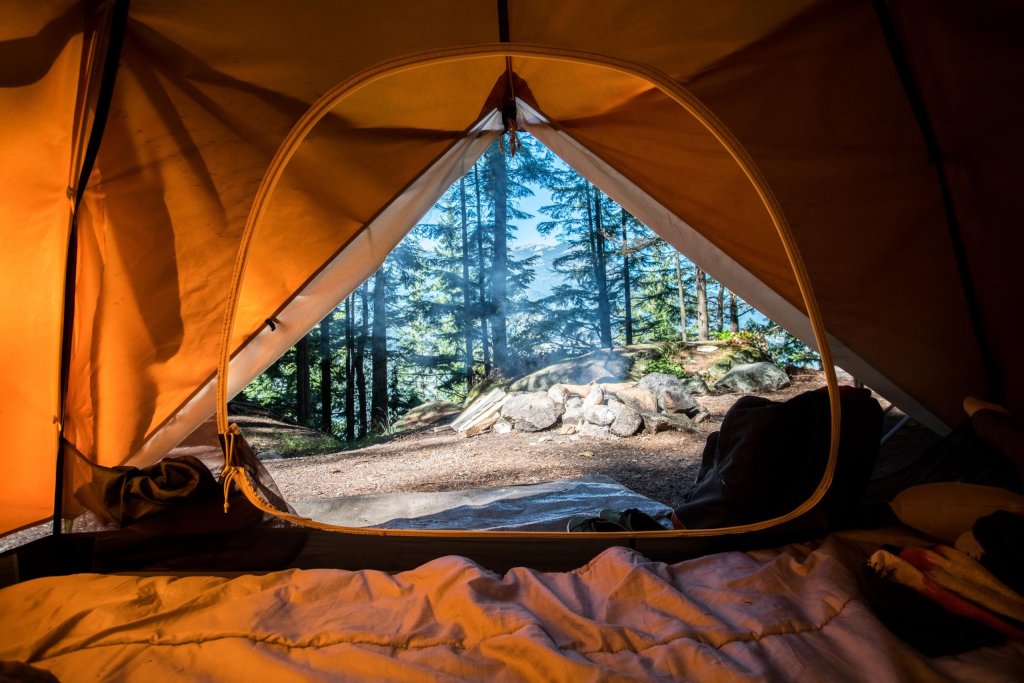
As the leaves change color and the air turns crisp, fall offers a unique and picturesque backdrop for camping adventures.
While fall evenings can be quite chilly, requiring proper insulation and layering, the cooler temperatures during the day can make for comfortable hiking and outdoor activities.
With schools back in session and summer vacations over, campgrounds and trails tend to be less crowded, providing a more serene and peaceful experience.
It’s also important to realize that a lot of hunters are searching for deer hunting tips when the season opens and you need to protect yourself if you’re out camping in the months of October and November. Be sure to wear bright orange and be respectful of hunters.
One of the biggest draws of fall camping is the opportunity to witness the stunning display of colorful foliage and scenic views. The changing leaves provide a breathtaking natural canvas, making fall a popular time for photographers and nature enthusiasts.
However, fall can also bring unpredictable weather patterns, including rainy days and gusty winds.
To prepare for fall camping, pack warm layers, including insulated jackets, hats, and gloves, to combat the cooler temperatures. Invest in a high-quality sleeping bag and pad designed for colder weather camping. Bring a tarp or shelter to create a windbreak and protect your campsite from the elements.
Be prepared for wet conditions by packing waterproof gear and footwear with good traction. Research the peak foliage times in your desired location to ensure you catch the vibrant fall colors at their best.
Fall Camping Tips
- Invest in warm layers, jackets, hats, and gloves for chilly nights
- Pack a tarp or shelter for wind protection and wet conditions
- Time your trip for peak foliage in the region you’re visiting
- Bring waterproof gear and footwear with good traction
Winter Camping
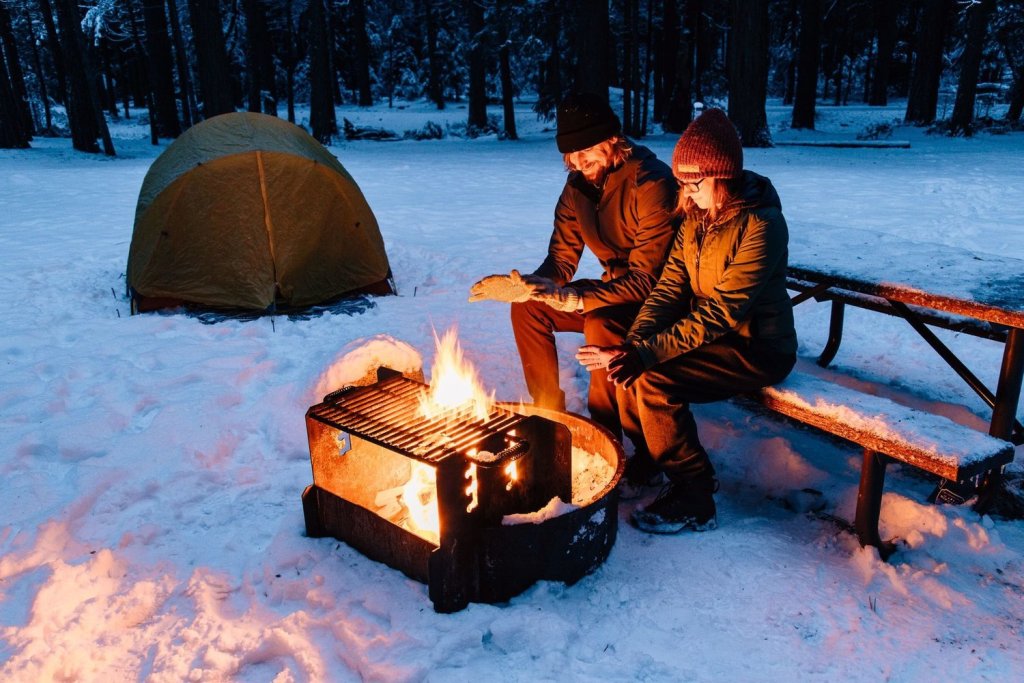
For the adventurous and well-prepared, winter camping offers a unique and serene experience in the great outdoors. Imagine waking up to a winter wonderland, with snow-covered landscapes and crisp, fresh air. However, winter camping also comes with its fair share of challenges.
Snow and freezing temperatures are the norm, requiring specialized gear and preparation. Winter camping often involves dealing with sub-freezing temperatures, snow, and icy conditions.
With the sun setting earlier, your camping activities will be limited to fewer daylight hours. On the upside, fewer people venture out in the winter, providing a tranquil and secluded camping experience.
In mountainous regions, it’s crucial to be aware of the potential for avalanche risks and take necessary precautions. Invest in high-quality, insulated winter camping gear, including a four-season tent, sleeping bag, and pad designed for extreme cold.
Pack appropriate winter clothing layers, including base layers, insulating mid-layers, and a waterproof and windproof outer shell. Bring plenty of high-calorie, easy-to-prepare foods and hot beverages to stay fueled and warm.
Consider using a camping stove or portable heater to help maintain warmth in your tent. Having a survival kit can be the difference between life and death during an emergency.
Research avalanche risks and conditions in your intended camping area and be prepared to adjust your plans accordingly. Pack emergency equipment, such as a shovel, avalanche beacon, and extra insulation, in case of unforeseen situations.
Winter Camping Tips
- Use a four-season tent, insulated sleeping bag, and cold-weather gear
- Layer up with base layers, insulation, and a waterproof outer shell
- Pack high-calorie foods, hot beverages, and a camping stove/heater
- Research avalanche risks and bring emergency equipment if needed
Final Thoughts
Regardless of the season, proper planning and preparation are key to enjoying a safe and memorable camping experience. If you want to put the survival tips into action under the guidance of experienced instructors, then check out classes here
However, as the seasons change and temperatures fluctuate, many outdoor enthusiasts seek refuge in cozy cabin rentals, offering a perfect blend of comfort and proximity to nature. Whether nestled in the mountains, by a tranquil lake, or deep within a forest, cabin rentals provide a haven for adventurers seeking refuge from the elements.
By understanding what to expect and how to prepare for each season’s unique challenges and opportunities, you can maximize your time in the great outdoors and create lasting memories. Embrace the changing seasons, step out of your comfort zone, and embark on your next camping adventure with confidence and excitement. Nature’s beauty and the thrill of the outdoors await!

